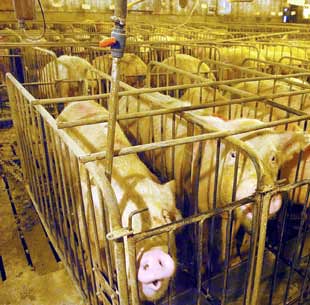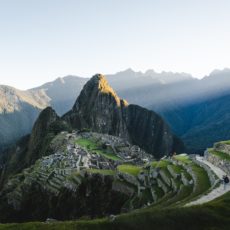“She was perfect and very friendly” she said. She was perfect until the day she tried to eat my finger.
Anais, a French counselor recalls playing with her snake when she was a child. The thought of her lengthy friend makes her smile.
My mother looked panicked, but I was not really. Her immediate response was to call for help, but I stopped her because I knew what was going to happen to my snake if she did call for help. I told her “She will eventually let go mom.” She did not look convinced, but we waited anyway. We tried every trick we could find on the internet for about 30 minutes until one of them worked and she let go of my finger. My finger was purple by the time she released it, but all was well.

It is fair to say that some people are born into vegetarianism or veganism while others join the movement through exposure, education or because of their love for animals.
“I am a generational vegetarian,” Asha cook said. Asha Cook is a soon to be senior studying in the state of New York.
Asha was certain of two things, first, she had been a vegetarian from the moment she was born and second, vegetarianism had been in her family for three generations now.
“My grandfather was very hippie dippy eco conscious and he started us off.” She said. He cared deeply for the environment, but he also cared about his health, so vegetarianism came in handy.
Adopting a vegetarian diet may lower the risks of chronic diseases such as coronary artery disease, obesity, diabetes, and certain cancers according to Richard Corliss in an article published by Time. The article suggests that well-planned vegetarian diets can be both healthful and nutritionally adequate, offering benefits in disease prevention and treatment.
Anais on the other hand became a vegetarian later in life and then eventually switched to veganism. Her journey with vegetarianism started when she was 12 years old. She never was a huge fan of meat but most importantly, she liked animals way too much. As the years passed, she realized that being a vegetarian was not enough for her.
“I became a vegan about 6 years ago because I discovered that being vegetarian still harmed animals.” She said.
Anais believes that animals, even those not directly slaughtered for consumption, endure awful conditions. Despite not needing to kill animals for products like milk, they still suffer due to the way they are kept. She feels discomfort with the treatment of animals within these systems and is concerned about the impact that excessive meat consumption has on biodiversity conservation and the planet.

“Adopting a vegetarian or vegan lifestyle is a powerful means to reduce our greenhouse gas emissions, combat climate change and biodiversity loss.” She said.
According to an article published by Plant Based News, excessive meat consumption contributes to the biodiversity loss through:
• Expansion of agricultural land for livestock farming, leading to deforestation and habitat destruction.
• Resource depletion, as meat production requires significant amounts of water, land, and energy.
• Pollution from livestock farming, including greenhouse gases, ammonia, and nitrogen compounds, which harm ecosystems and aquatic life.
• Disruption of local ecosystems due to intensive animal farming practices, altering soil composition, and reducing plant biodiversity.

Anais grew up in California, but she never really stayed in one place. One of her latest adventures was in Antarctica where she attended a talk by a glaciologist addressing climate change and its impact on Antarctic ice which is disappearing at unexpected and unprecedented rates.
“One challenge we may not be able to overcome is the loss of biodiversity” the glaciologist said.
Anais remembers him presenting a diagram illustrating future years. He explained that certain events would unfold if no action were taken to address climate change, if minimal efforts were made, and if collective action was taken. It had a significant impact on me, she recalls.
“The amazon rainforest might become a desert but the kind of biodiversity we lost will never come back” he adds.
Anais paused, contemplating the eventual disappearance of the rainforest and all the biodiversity it encompasses. “I am terrified at the thought,” she said.
Meat has been a staple in the Human diet for as long as history records, presenting a significant challenge for many contemplating a shift away from it. However, this shift does not need to be as daunting as it seems.
If vegetarianism or veganism feels too extreme or unattainable for you, there are still meaningful ways to contribute to the fight for preserving biodiversity and saving the planet. Anais recalls a conversation with her brother, who recounted a statement from his high school professor.
“The best thing you can do to protect the environment is to kill yourself; the second-best thing you can do is to become a vegan” the professor said.
Anais disagreed, calling this view extreme.
“No worrying about doing it all at once. Do not worry about being completely vegan or vegetarian. It is okay to not be completely one thing.” She said.
Cook supports this perspective by suggesting practical steps: “Start by consuming less dairy, red meat, and fish. Be mindful of your consumption habits.” By aligning your intentions and being conscious of your consumption, you are already making a meaningful contribution to biodiversity preservation. Every small adjustment towards a more sustainable lifestyle count.



